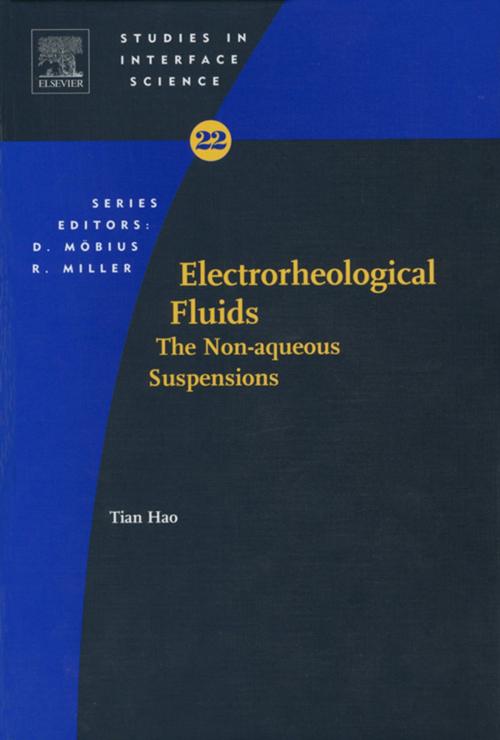Electrorheological Fluids
The Non-aqueous Suspensions
Nonfiction, Science & Nature, Science, Physics, Mechanics, Technology| Author: | Tian Hao | ISBN: | 9780080455440 |
| Publisher: | Elsevier Science | Publication: | August 30, 2011 |
| Imprint: | Elsevier Science | Language: | English |
| Author: | Tian Hao |
| ISBN: | 9780080455440 |
| Publisher: | Elsevier Science |
| Publication: | August 30, 2011 |
| Imprint: | Elsevier Science |
| Language: | English |
An electrorheological (ER) suspension is made from an insulating liquid medium embodying either a semi-conductive particulate material or a semi-conductive liquid material (usually a liquid crystal material). Since its mechanical properties can be easily controlled over a wide range (almost from a pure liquid to a solid), the ER fluid can be used as an electric and mechanical interface in various industrial areas, for example, in the automotive industrial for clutch, brake and damping systems and in robotic arm joints and hands.
In addition, the ER technique can be used to fabricate advanced functional materials such as photonic crystals, smart inks, and heterogeneous polymer composites.
The major objective of Electrorheological Fluids is to present a comprehensive survey on the ER suspensions in term of screening high performance ER materials, physical mechanisms of the ER effect, and the applications of ER technology.
* Applications of ER suspensions are of wide interest both in academia and industry
* Surveys a large body of literature on the mechanism of the ER effect and the design of industrially applicable ER devices
* Discusses technological problems affiliated with industrial applications
An electrorheological (ER) suspension is made from an insulating liquid medium embodying either a semi-conductive particulate material or a semi-conductive liquid material (usually a liquid crystal material). Since its mechanical properties can be easily controlled over a wide range (almost from a pure liquid to a solid), the ER fluid can be used as an electric and mechanical interface in various industrial areas, for example, in the automotive industrial for clutch, brake and damping systems and in robotic arm joints and hands.
In addition, the ER technique can be used to fabricate advanced functional materials such as photonic crystals, smart inks, and heterogeneous polymer composites.
The major objective of Electrorheological Fluids is to present a comprehensive survey on the ER suspensions in term of screening high performance ER materials, physical mechanisms of the ER effect, and the applications of ER technology.
* Applications of ER suspensions are of wide interest both in academia and industry
* Surveys a large body of literature on the mechanism of the ER effect and the design of industrially applicable ER devices
* Discusses technological problems affiliated with industrial applications















